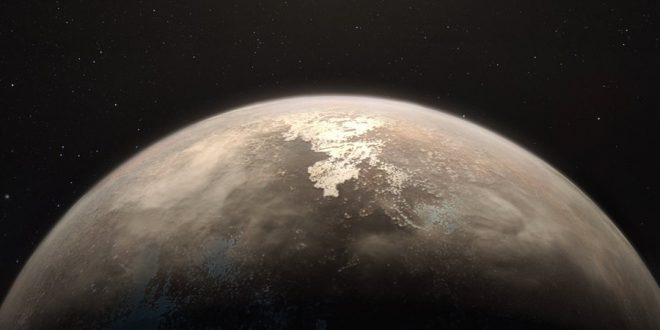Astronomers have discovered an Earth-like planet only 11 light years away that may support life. Named after the star around which it orbits, Ross 128b was identified by a team of researchers at the European Southern Observatory as having a projected mass 1.35 times that of Earth – and it may have surface temperatures suitable for sustaining life as we know it.
According to the five-nation team of astronomers who made the new discovery, Ross 128 b is no bigger than 1.35 times the size of Earth — very much the kind of planet that would have a solid surface where life could emerge. It orbits its parent star once every 9.9 days — an exceedingly fleeting year caused by the fact that the planet is 20 times closer to its star than Earth is to the sun. That ought to make the planet blisteringly hot, except that Ross 128 is a red dwarf, a far smaller, far cooler star than our yellow, so-called Class G star.
Even orbiting so close, Ross 128 b could thus have a surface temperature that averages about 269 degrees K, which sounds nasty until you realize that that comes out to about 73 degrees F (23 degrees C). What’s more, the planet rotates relatively slowly, meaning that if it has an atmosphere — by no means a sure thing — it would not have flung it off the way a rapidly spinning planet would over time.
But it’s something else in the nature of the star, not the planet, that makes the new announcement especially promising. We know of only one planet in the universe — our own — that harbors life, and so it has always made scientific sense to concentrate our search for extraterrestrial biology on planets circling sunlike stars. Those stars, however, are relatively rare, while red dwarfs make up perhaps 75% of all of the stars in the galaxy. Simple probability, then, says that they might be a far better place to go looking for living planets, provided those planets cuddle up close to the star’s hearth the way Ross 128 b does.
This is not the first time astronomers have discovered precisely this kind of Earth-like planet orbiting comfortably close to a red dwarf. Just last summer, a team of researchers who also used the wobble method discovered a planet orbiting an even closer red dwarf; indeed that dwarf, Proxima Centauri, is closer to Earth than any star in the cosmos, just 4.2 light-years away.
But the planet, Proxima Centauri b, faces some challenges Ross 128 b doesn’t. Red dwarfs can be volatile, sending out periodic flares that could blowtorch any atmosphere on a nearby planet off into space and destroy any life that might survive with their lethal levels of X-ray and ultraviolet radiation. In 2016, a team from the Smithsonian Astrophysical Observatory detected 66 separate flare events on Proxima Centauri. That would not necessarily be fatal to life on the nearby planet, but it wouldn’t do it any favors either. Ross 128, by contrast, appears to be a quieter star, with less frequent flaring — which is characteristic of more mature red dwarfs, further along in their life cycles.
None of this says that Ross 128 b or Proxima Centauri b or any other exoplanet has so much as a single living cell on it. What it does say is that the odds of life are at least greater than we knew and our search techniques are improving steadily. If biology is out there anywhere, we’re likelier to find it than we’ve ever been before.
Agencies/Canadajournal
 Canada Journal – News of the World Articles and videos to bring you the biggest Canadian news stories from across the country every day
Canada Journal – News of the World Articles and videos to bring you the biggest Canadian news stories from across the country every day



